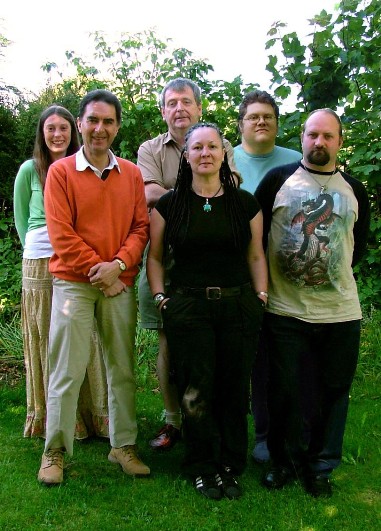
June 7, 2006

Jon Downes has announced that his Center for Fortean Zoology will attempt to track down recent accounts of “dragons” or monitor lizards in West Africa.
In early July 2006, a six-person team from the North Devon-based UK group is travelling to Gambia to investigate these folktales. They may find the trail a little cold.
Back on June 12, 1983, 15-year-old amateur naturalist Owen Burnham discovered the fresh carcass of a strange beast on the remote Bungalow Beach in Gambia. The stranded dead cryptid was around 15 feet long and looked like a cross between a crocodile and a dolphin.

Owen Burnham is today an accomplished wildlife photographer and author on African biology.
Realizing that it was something unknown to science, Owen, a missionary’s son, made detailed sketches of the creature. He and his family then buried it in the hot sand above the tide line, hoping that the dry sand would preserve the body.
Click image for full-size version
Owen made a detailed map. But the Burnhams never re-discovered the site, and the identity of the cryptid has been a hotly debated topic in cryptozoology for years, many considering it an unknown beaked whale, a misidentified dolphin, or an unknown reptile. The Centre for Fortean Zoology has a copy of the map and intends to try to find, dig up, and examine the cryptid’s body.
The group also plans to track down the source of the stories of a swamp-dwelling dragon known as Ninki-nanka. The 30-feet-long beast is said to lurk in deep riverbank holes and emerge into the swamps at night. In this way, it overlaps with the reported behavior of the Cameroon-Congolese reports of Mokele-mbembe. As recently as the early 1990s, Ninki-nanka allegedly is reported to have killed people.
Cryptozoologist Richard Freeman thinks Ninki-nanka may be a giant, semi-aquatic monitor lizard. Related to the celebrated Komodo dragon, the African reptile would be three times as long, perhaps as big as a very large crocodile. The team hopes to interview witnesses and venture into the deep mangrove swamps on the trail of the beast.
Click image for full-size version
The team members are, as pictured, left to right below:
Suzi Marsh, computer specialist;
Dr. Chris Clark, engineer;
Chris Moiser, biologist and team leader;
Lisa Dowley, first aid and security expert;
Oll Lewis, ecologist; and
Richard Freeman, cryptozoologist.

The expedition’s progress can be charted on the CFZ website.
About Loren Coleman
Loren Coleman is one of the world’s leading cryptozoologists, some say “the” leading living cryptozoologist. Certainly, he is acknowledged as the current living American researcher and writer who has most popularized cryptozoology in the late 20th and early 21st centuries.
Starting his fieldwork and investigations in 1960, after traveling and trekking extensively in pursuit of cryptozoological mysteries, Coleman began writing to share his experiences in 1969. An honorary member of Ivan T. Sanderson’s Society for the Investigation of the Unexplained in the 1970s, Coleman has been bestowed with similar honorary memberships of the North Idaho College Cryptozoology Club in 1983, and in subsequent years, that of the British Columbia Scientific Cryptozoology Club, CryptoSafari International, and other international organizations. He was also a Life Member and Benefactor of the International Society of Cryptozoology (now-defunct).
Loren Coleman’s daily blog, as a member of the Cryptomundo Team, served as an ongoing avenue of communication for the ever-growing body of cryptozoo news from 2005 through 2013. He returned as an infrequent contributor beginning Halloween week of 2015.
Coleman is the founder in 2003, and current director of the International Cryptozoology Museum in Portland, Maine.
Filed under Breaking News, Cryptotourism, CryptoZoo News, Cryptozoology, Expedition Reports, Eyewitness Accounts, Folklore, Forensic Science, Living Dinosaurs, Out of Place, Sea Serpents